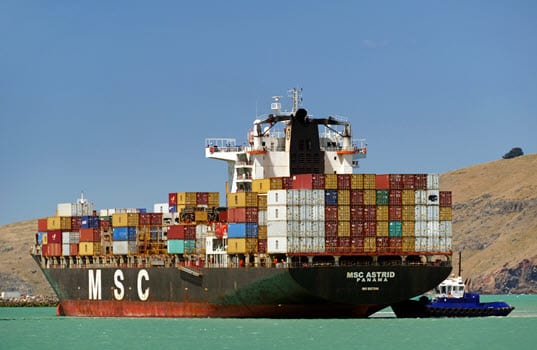By Keith Reid
The International Maritime Organization’s (IMO’s) low-sulfur rule, scheduled to become effective in January 2020, will set the sulfur content for bunker fuels (residual oil/high sulfur fuel oil) at 0.5 percent (5,000 ppm) or less compared to 3.5 percent today. While there is currently a 0.1 sulfur requirement (1,000 ppm) for specific emission control areas, that is generally limited to the coastal regions of the United States, Canada and Western Europe.
There are exceptions to the fuel requirement for ships fitted with sulfur scrubbers. Additionally, some vessels might be converted to alternatives like liquefied natural gas. Those solutions come with some significant capital costs and have low penetration today, but are seen as meeting up to 1/3 of the demand moving forward.
There will be significant penalties for vessel operators refusing to comply, including having the vessels declared unseaworthy.
This switchover is to reduce health issues related to particulates and environmental issues like acid rain, which were the justifications for sulfur reductions in diesel. That transition, despite considerable concerns, went well from both supply and price perspectives. Many of those same concerns have been raised for this shift.
This rule is seen as being highly disruptive to the shipping industry, and likely downstream with higher prices working into to the retail sector. It is also seen as being disruptive to the refining industry.
While there has been a significant push toward low sulfur fuels in the refining sector, many refiners serving higher-sulfur markets like power generation and maritime have not made the expensive upgrades required to produce a lower sulfur fuel. The maritime market consumes approximately 3.5 million barrels per day of high sulfur fuel or 4% percent of total demand. The concern is a shortage of light, sweet crude to facilitate more low sulfur products and shifts in production strategies. This is expected to create a ripple effect through the existing oil and distillate markets that will likely result in higher prices during a transition period for bunker fuel but also diesel, jet fuel and heating oil. There is also the potential to marginally impact gasoline. There have been some extreme predictions, and some that were far more moderate.
Analyst Philip Verleger predicted in 2018 that prices could peak at $200 per barrel. At about the same time, Morgan Stanley predicted a potential of $90 per barrel oil. Other analysts predict a 25-30% increase. This will tend to be a short term disruption of a few years with the market stabilizing over time. Goldman Sachs sees an increase in scrubber use as leading to less of a crisis.
 FMN asked analyst Alan Levine, Chairman of Powerhouse, for his thoughts on the issue. Levine is an internationally recognized expert in pricing and business practices in the energy industry. A petroleum specialist for over 40 years, he is a highly regarded authority on the relationship of energy futures to cash petroleum markets. Levine was a consultant to NYMEX at the inception of the heating oil contract in 1978 and is a hedge adviser to many energy interests. Powerhouse provides hedging plans, price monitoring and buy and sell order execution.
FMN asked analyst Alan Levine, Chairman of Powerhouse, for his thoughts on the issue. Levine is an internationally recognized expert in pricing and business practices in the energy industry. A petroleum specialist for over 40 years, he is a highly regarded authority on the relationship of energy futures to cash petroleum markets. Levine was a consultant to NYMEX at the inception of the heating oil contract in 1978 and is a hedge adviser to many energy interests. Powerhouse provides hedging plans, price monitoring and buy and sell order execution.
FMN: There is a short time left but a lot of options. What is your take on this potential oil and fuels crisis?
Levine: What’s going to happen… With my reading on this, it would appear to me that many of [the shipping companies] are coming down on the side of going with some kind of scrubber, at least long term. Because, there’s this concern that they pull into a port and that port doesn’t have the low-sulfur fuel they need. What do they do then? This creates a problem. That’s not to say that there won’t be some demand on ultra low sulfur diesel. I absolutely think there will be.
I wouldn’t discount [extreme prices] entirely. Some years ago I published a piece when the oil price was around $45 per barrel and I used some technical material that suggested it could go to $150 though I just couldn’t imagine it happening. But within a year we were at $147, so you can’t say that it can’t happen. But, if oil prices go up that high, it would induce a slowdown in economic activity of very high proportion.
FMN: I would imagine if the most bullish market predictions come true—oil hitting $200 per barrel—there would be some intense pressure to back off on the regulation for some period of adjustment time.
Levine: You bring up an important thing when you talk about, exceptions. We’ve had any number of things that have come out that would imply oil prices will go to the moon, like imposing sanctions on Iran. So, when it comes to it, they impose the sanctions but then give everybody a waiver. I think you might also have the same thing here. However, there have been strong reservations expressed about granting waivers or adjusting deadlines.
FMN: Much of the concern is that sour crude is difficult to process into low sulfur fuels, thus creating shortages and putting a premium on light, sweet crude. As the U.S. fracking production tends to be lighter crude this could potentially provide some offset.
Levine: One thing that’s happened that really exceeded anybody’s expectations is the speed at which domestic production has risen. We’ve been showing nearly 12 million barrels a day on the weekly reports. And as they bring more and more pipeline capacity online in Texas, that will get into the market and work against higher prices.
FMN: This reminds me of the concerns going into the 2010 switchover to ULSD (15 ppm). I admit to being more than a bit “glass half empty” in my reporting at the time, because for three straight years up until the deadline I could get no answers from the refining, analyst or distribution community about any real progress toward meeting the goals. But, in the end, it just happened with little drama.
Levine: Oh my God. The world was coming to an end. We can never produce this much ULSD. The world is dissolving around us. And, at first there were price differences. For a while they ran two different, futures prices. But when the time came it was a big thud. And it’s because, in part, there are some very creative individuals and they do what is necessary to make things happen.
Again, this is not nothing, but at the same time I think one must be aware of how effectively industries respond to these issues.









